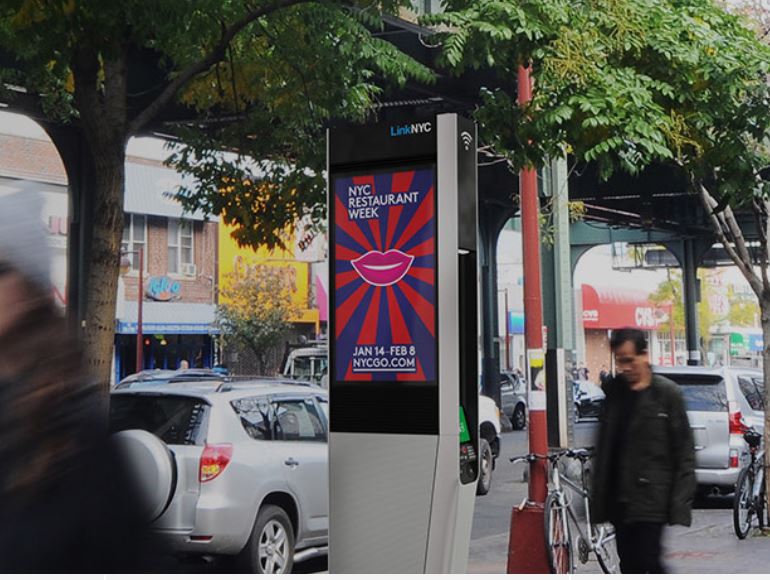Share This
Related Posts
Tags
LinkNYC
By Anca Gagiuc on Mar 10, 2016 in Technology
Ever wonder what the future looks like for New York City’s payphones? Well, you won’t be seeing them for too long as they disappear like the extinct specie s they’ve become. But a new public utility kiosk is coming along to take their place.
s they’ve become. But a new public utility kiosk is coming along to take their place.
LinkNYC, a consortium of experts in technology, media, user experience and connectivity that includes Intersection, Qualcomm, and CIVIQ Smartscapes, has plans to replace them with a high-tech sibling. The launch has already begun with a beta phase rolling out a fiber optic network of kiosks equipped with different types of free services such as high speed internet, web browsing, cell phone charging and calls to within the U.S. Additional apps, features and services will be rolled out on an ongoing basis over the next few years.
“It’s going to be the largest and fastest public Wi-Fi network in the world,” Collin Odonell, managing member of CityBridge, said in a prepared statement. “It’s really the first of this kind of network and it’s going to transform the streets and people’s way to access information.”
Privacy and security is the main concern, especially when the subject is some public Wi-Fi network. LinkNYC claims it offers two types of networks: a public Wi-Fi one and a private encrypted one. The private, fully equipped network is accessible only by devices that support Hotspot 2.0 (currently, LinkNYC only supports Apple gear). On its public network, LinkNYC will be able to track the user’s MAC address (which won’t be tracked either, claims LinkNYC). In addition, users will have the option to clear their sessions once they’ve done using the kiosk. Please keep in mind though that it’s still very risky to log in to bank accounts over public networks and that even though the user information won’t be shared with advertisers, it could be handed over to law-enforcement.
The project is estimated to cost $200 million and to bring $500 million for the city in the first 12 years, without costing the taxpayers any money. By July, downtown and northern Manhattan will have Links, as well as south Bronx, Jamaica, Queens, Flatbush Ave., Brooklyn and St. George, and Staten Island. The first two have already been installed on 3rd Avenue at 15th and 17th Streets. Within the first four years, minimum 4,450 Links will be installed in Brooklyn, the Bronx, and Queens and all of them will offer the gigabit speed. By July, 500 kiosks are scheduled to be up and running.
The Link stands nine feet six inches tall, a little above the average Don’t Walk sign. It is built to withstand extreme heat and cold, rain, snow and flooding, earthquakes, vandalism and theft—all while conforming to ADA standards. Placed perpendicular to the passing traffic, its sides will show advertisements—four feet high by three feet wide, that chance every fifteen seconds. This is where the money comes from, in case you were wondering.
Each kiosk will be able to support hundreds of users within a 150-foot radius. Speeds will vary depending on the user’s distance, as well as the type of device used; they announce a bandwidth of 1GB, but individual users will more likely see upload and download speeds closer to 300MB per second. Yet, this is still much faster than most cellular or landline Internet connections in the U.S. Furthermore, range can theoretically extend to up to 400 feet, as long as there are no obstacles in the way.
The service is intended for users who want high-speed internet access on their mobile devices while in New York City. However, people who live close enough to a kiosk could access the network from inside their apartments, allowing them to get rid of their private paid-for internet connection entirely. This will offer an alternative to low-income New Yorkers, as well as others who have felt betrayed as Verizon’s promise to install FiOS citywide has failed.
